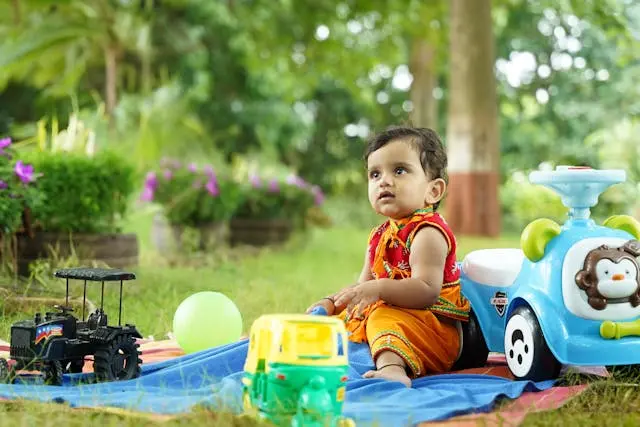Finding an approach to parenting that works for you as a parent is critical. Despite the fact that there are numerous ways to raise children, Asian parenting styles or techniques provide a unique perspective. They can differ significantly from other methods. Therefore, it’s vital to understand the ways they vary so you can select the ideal one for your family.
This blog discusses the many Asian parenting methods and the benefits and drawbacks of each. Parenting styles vary according to culture, societal conventions, and morals. I want to summarize the Asian family structure before delving into the many Asian parenting techniques that exist today. Join us as we dive into the fascinating world of Asian parenting styles!
The Authoritarian Parenting Style: Pros and Cons

Authoritarian parenting is a method marked by firm rules, high expectations, and a significant focus on obedience and discipline. Research has shown that Chinese youth raised in authoritarian families tend to outperform their counterparts from authoritative families in terms of academic performance. In this Asian parenting style, parents often exert considerable control over their children’s actions and choices, typically leaving little room for negotiation or adaptability.
Authoritarian parents value maintaining authority and may resort to punishment as a form of discipline. Although this method of parenting can promote a well-structured and organized atmosphere, it can also have some drawbacks. Children raised by authoritarian parents may struggle with low self-esteem, decision-making issues, and a lack of independence. The stringent rules and inflexible expectations could impede the growth of critical thinking abilities and independence.
Authoritarian parenting style is often the most criticized out of all of the Asian parenting styles, however, it is not always toxic. If you want to know about negative parenting signs, read our post here.
The Permissive Parenting Style

Permissive parenting is a method marked by a relaxed attitude, few rules, and a substantial amount of freedom granted to children. Parents who embrace this style tend to be indulgent and shy away from setting firm boundaries or implementing consistent discipline. While permissive parenting has some positive aspects, it also comes with specific drawbacks.
Pros of permissive parenting style
- Nurturing and warm environment: Permissive parents often create a nurturing and warm atmosphere for their children. They may prioritize forming an intense emotional connection and cultivating a positive relationship between parents and children, which can lead to an atmosphere of safety and ease.
- Enhanced creativity and self-expression: Children raised in lenient parental contexts may have greater flexibility to develop their imaginations and express themselves because there are fewer limits and regulations. This allows them to pursue their particular interests and talents.
- A high level of self-worth and independence: permissive parenting can help youngsters develop a sense of freedom and self-esteem. The lack of rigorous laws and regulations may give children more confidence regarding making decisions and voicing their own thoughts.
Cons of permissive parenting style
- Lack of structure and boundaries: This Asian parenting style often needs clearer structure and boundaries, which can result in children needing help understanding appropriate behaviour and limits. Without consistent guidelines, children may struggle with self-control, impulsivity, and respecting authority figures.
- Delayed development of responsibility: The need for firm expectations and consequences in permissive parenting can lead to delayed development of responsibility in children. Children may have trouble taking ownership of their actions and face challenges when it comes to meeting obligations or handling responsibilities.
- Potential behavioural problems: Children raised with permissive parenting may exhibit behavioural problems due to the absence of consistent discipline and guidance. This results in having difficulty understanding and adhering to societal norms and rules, which can impact their interactions with others and their overall functioning.
- Difficulty with frustration tolerance: The absence of structure and consistent boundaries in permissive parenting may result in children having lower frustration tolerance. They may struggle to cope with disappointment or setbacks, as they may not have been exposed to healthy ways of managing challenges or dealing with limits.
Autonomous-democratic parenting

Autonomous-democratic parenting is an Asian parenting style that was developed in the United States. It’s characterized by parents who are more involved in their children’s lives and are flexible with rules and expectations. Parents typically don’t exercise as much authority or are as strict, but they also will only partially relinquish control.
The freedom that comes with this technique allows kids to make decisions on their own while still receiving direction from their parents on what is best for them–and the way they are supposed to go about making personal choices (rather than simply telling them “no”). Autonomy also fosters independence, which is especially crucial if you live away from loved ones who could assist you in an emergency case at home (such as becoming ill).
This style has quite a few benefits but also some challenges.
Pros of democratic parenting style
- Kids become independent and good decision-makers
- Open communication and support help build trust
- Children develop emotional intelligence and empathy
- Discipline is fair and helps kids understand the consequences
- Kids tend to do well academically and personally
- Children have well-rounded development, exploring various activities
Cons of democratic parenting style
- This Asian parenting style can be time-consuming and challenging for parents
- Decision-making can sometimes be tricky for kids or cause conflicts
- Parents might struggle with consistency
- The approach can lean towards permissiveness if not careful
- Kids might face challenges when dealing with different societal norms
- This style may not work for all children; some might need more structure or guidance
Authoritative Parenting Style
Authoritative parents tend to be fair and firm. They believe that children should be treated with respect but also taught to be independent and responsible.
The authoritative parenting style has been shown to produce children who are more independent, self-reliant and confident than those raised by other styles.
Researchers have found that children of authoritative parents score higher on measures of social competence, self-esteem and academic achievement than kids raised by permissive or authoritarian parents.
Pros of authoritative parenting
- Healthy balance: Combines warmth and discipline for a nurturing, structured environment.
- Clear expectations: Provides structure and boundaries for a sense of security.
- Open communication: Fosters trust and strong parent-child relationships.
- Independence and autonomy: Encourages critical thinking and self-confidence.
- Emotional well-being: Supports effective emotion management.
Cons of authoritative parenting
- Time and effort: This can be challenging and demanding for parents.
- Potential conflict: May arise from setting expectations and boundaries.
- Pressure to perform: This may cause stress and anxiety for children.
- Individual differences: Not suitable for every child’s temperament or needs.
- Striking a balance: Difficult to consistently maintain the right balance between warmth and discipline.
Challenges faced by Asian parents when raising their children in Western culture parenting style

Asian parenting styles are often stereotyped as strict and conservative parenting methods. However, the challenges faced by Asian parents when raising their children in Western cultures are more complex than this simple stereotype suggests.
Clash of Cultural Values
Asian parents raising children in Western cultures may encounter challenges due to differing cultural values and expectations. Conflicts can emerge when traditional Asian values, such as collectivism and obedience, collide with the individualistic and independent values commonly found in Western societies.
Maintaining Cultural Identity
It may be challenging for Asian parents to assist their children in keeping their connection strong with their Asian ancestry while adapting to Western culture. Finding an appropriate balance between both cultures can be difficult, as youngsters may feel pressure to adapt to Western values while also wishing to embrace their Asian background.
Generational Divide
Asian parents and their children may face a generation gap, especially if they were raised in a distinct cultural environment. As kids might possess distinct experiences and standards from their parents, this can lead to misunderstandings and communication obstacles.
Parent-Child Communication Styles
Asian parenting styles often emphasize respect and obedience, which can contrast with the more open and egalitarian communication styles frequently encouraged in Western cultures. This can lead to challenges in parent-child communication and understanding, as children may seek more autonomy and freedom to express their opinions and emotions.
Academic and Societal Pressures
Asian parents may face additional pressures concerning their children’s academic performance and social success in Western cultures. The competitive characteristics of Western educational institutions and social surroundings can result in high standards and pressure for parents as well as kids, which may require good navigation.
Balancing Traditions and Modernity
Parenting in modern times can be difficult, particularly when attempting to reconcile traditional Asian values such as obedience and reverence with more Western techniques that emphasize individuality and creativity. We’ll look at several modern solutions that mix the best of the two worlds to assist you in negotiating this.
Holistic development: Prioritize your kid’s overall well-being by concentrating on their social, mental, and physical development alongside their academics. Motivate them to follow their dreams, be active, and form good relationships.
Open communication: Foster trust and strengthen the parent-child bond by creating an environment where your child feels comfortable expressing their thoughts and feelings. Listen actively and respectfully to their opinions and concerns.
Critical thinking and creativity: Nurture your child’s innovative and adaptable side by encouraging independent thinking, problem-solving, and creativity. This complements traditional Asian values like hard work and perseverance.
Cultural awareness and adaptability: Help your child appreciate their Asian heritage and understand Western cultures. This multicultural perspective promotes empathy, global understanding, and a strong sense of identity.
Customized parenting approaches: Because each child is unique, it is critical to customize your parenting approach to their specific needs. To assist your kid’s growth and well-being, be adaptable and draw on the most effective of both Asian and Western ways.
Conclusion
These are only a few instances of the various Asian parenting methods. There are numerous others, each with its own set of pros and downsides. The most essential thing is to find and stay with what works best for your family!









